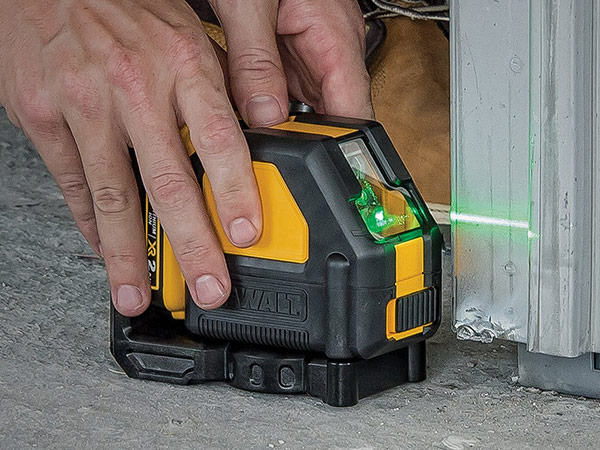

Plumb and Level: Perfection in Both Directions
If you’re walking on an uneven floor and looking out windows that slope awkwardly to one side, you better be in a carnival funhouse, not your home. In a home, if a wall, post, or framing isn’t “plumb,” that means it isn’t vertically straight. This can create unstable structures that could lean, creak, or even collapse. If your floors aren’t level, besides leaving your dog in a state of confusion every time their ball rolls away, you also can set up problems with gaps where the floor meets the walls or even create cracks. Making sure something is plumb and level are key skills to learn to end up with quality construction projects that will last a lifetime. Here’s how to get them right.
What Does Plumb Mean in Construction?
When you measure something as “plumb” you are verifying that it's perfectly vertical, or perpendicular to the horizon. If the framing in a home isn’t plumb, for example, drywall and trim will be difficult to apply, resulting in a “wavy” wall that’s more obvious the more you add to it, from paint to wallpaper and decor. An extremely “out of plumb” foundation, on the other hand, could crack and create major issues with fissures and seepage into the home before a single nail hits wood – or worse, could lead to structural instability and ultimate collapse. As a result, throughout a construction project, each stage should be checked and re-checked that it’s “in plumb.”
The classic tool used to measure if something is plumb is the plumb bob, which is a pointed weight (often made of metal) attached to a string. It’s been used throughout history—even as far back as ancient Egypt. (Those builders knew a thing or two!) Even if you’re not after building a whole pyramid, it’s a very easy tool to use for your construction project.
A modern tool, a “carpenters level” or spirit level can also be used to find if a wall or other vertical space is plumb. Simply lay the level against the item you are checking, and if the bubble falls in the exact center of the vial, then your structure is plumb.
How to Use a Plumb Bob
- Measure two inches out from the top of the wall and mark a small “X” with pencil on the ceiling at that point.
- Hammer a small nail to that point and attach the string of the plumb bob to that nail, allowing the plumb to swing freely.
- When the plumb stops swinging and is stationary, mark a small X below its point on the floor.
- Measure the distance to that "X" from the wall and if it's also two inches, then your wall is plumb.
Checking vertical posts for plumb, such as a fence post or column, you should test two adjacent sides to assure there is no leaning happening. For a round column or post, test about a quarter of the way around.
Level in Construction
On the other side of the equation is making sure your project parts are all “level.” The level measurement can ensure that elements are straight on the horizontal axis. Using that same carpenters level or a “bubble level”, lay the level on the surface and see if the bubble is in the exact center of the vial.


Alternately, you can utilize a laser level to check for level, which is helpful for situations where making precise measurements over a large area to either check or plan for a level project. Laser levels can include crosshairs projected to help check both plumb and level measurements at once. They can come in square shapes, not just long rectangles like a common carpenter’s level, making laying level tile a snap since you can align them to the edge of each tile as you go. Or attach a laser level to its small tripod, and you can get leveling projects done solo.
How to Fix Uneven Surfaces
While finding that something is level seems pretty easy, correcting it isn’t always so…straight forward. If a foundation is found to be out of level, the very top of the poured concrete can be ground down until the surface is indeed level. To level floors, such as in an older house, special leveling compounds (similar to concrete) can be added to the subfloor in necessary areas.
At McCoy’s, you’ll find helpful experts who can help you get the materials you need for your next big project. From plumb to level and every measurement in between, we can share lots of ideas to help you find the right way to get to that finish line. Yep, it’s nothing but the level best at McCoy’s.
